How to create a preserver’s paradise – a pantry for year-round food storage
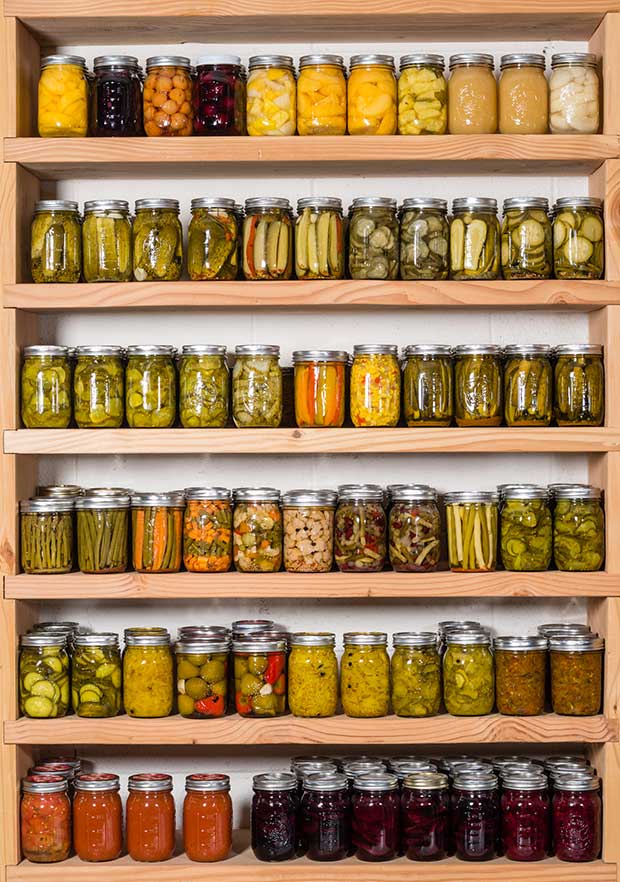
Autumn is a season of plenty. Here’s how to store any leftover crop safely and mitigate against a spring shortage.
Words: Sheryn Dean
When I designed my block, I declared I would grow enough of my own fresh fruit and vegetables year-round that there would be no need to preserve and store. This was wrong.
Crops like garlic, onions, and pumpkin produce just once a year. While I may well have fresh fruit, I realised I would get quite sick of eating only citrus all winter and think fondly of the excess nectarines and plums I threw to the pigs the summer before.
Reluctantly, I gathered preserving jars and bought a large freezer. Even more reluctantly, I now spend time in the kitchen over summer filling them each year.
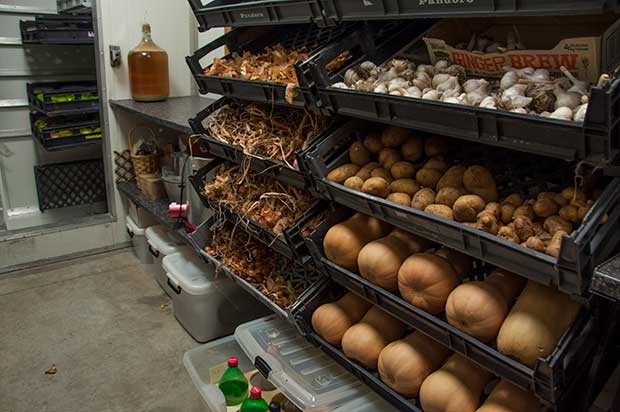
When the garage proved to be the wrong place, Sheryn created the ultimate storage room.
Then came the question of where I would put everything. While I have a large kitchen, it is not large enough for a dozen pumpkins, a six-month supply of potatoes, 50-odd bulbs of garlic, 200 onions, 20 jars of honey and all the bottles of jams, fruits and pickles, let alone the cheese, dried fruits and nuts.
The garage quickly proved too hot, too small and too dirty. The afternoon sun and the heat from the car caused potatoes to chit, onions to sprout and pumpkins to rot before their time. The need for a cool, designated storage room was obvious.
FOOD STORAGE
The ideal storage place for fresh fruit and vegetables is cool and moist with good airflow.
Temperature
Cool temperatures slow ripening and prevent winter vegetables from sprouting.
The optimum temperature for a pantry to store cheeses, tropical fruits and winter vegetables is 13-15°C. A home chiller to store fruit and meat is usually set between 2-4°C. A fridge is usually somewhere in the middle, about 7°C.
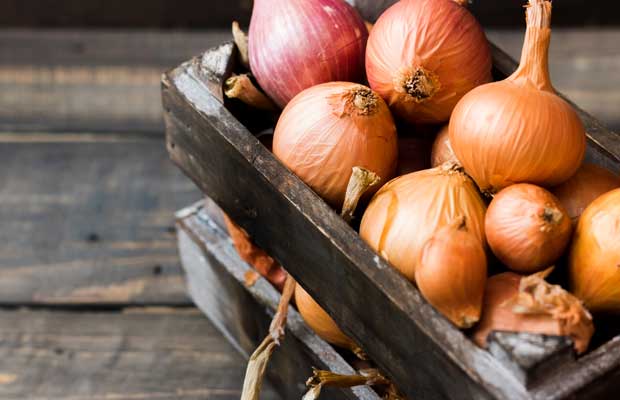
Different fruits and vegetables have different optimum storage temperature. In general, temperate fruits are best stored as cold as possible without freezing (1°C), while tropical fruits and root vegetables will be damaged if kept below 10°C.
Good insulation is essential in a storage room. Cold water (flowing) or refrigeration can be used to lower the temperature.
Humidity
Moisture is important when storing food. The optimal range for fresh fruit and vegetables is 90-95 per cent humidity. Less and the fruit will dehydrate and go wrinkly. Cheese should be aged in 75-95 per cent humidity. Nuts, dried fruit and herbs require a drier environment.
Most fridges are very dry (about 30 per cent humidity), hence the development of in-built fruit and vegetable bins to seal and prevent moisture loss. Commercial chillers can be adapted for a price.
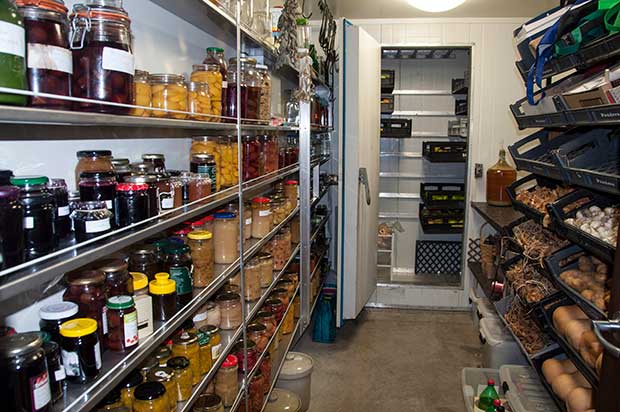
Looking down the pantry, towards the chiller at the back.
But, on a smaller scale, the easiest solution is an ultrasonic anion atomiser, otherwise known as a garden mist-maker or fogger, available at most garden centres for about $30. Other methods are to put moist paper towels, sponges or containers of water in the fridge. For those that can, cold water trickling over the floor keeps conditions both cool and damp.
Airflow
As fruits and vegetables ripen, they use up oxygen and produce carbon dioxide (CO2), which in turn induces fermentation (rotting). Airflow is the best way to prevent CO2 from building up, but that can affect temperature and humidity.
Burnt lime, or calcium oxide, exposed in the storage area will absorb CO2 until it is saturated and convert it to calcium carbonate. Burnt lime can be found in rural horticultural supply stores (eg FruitFed) but most minimum orders are a ton, which might be a bit excessive for the home pantry. Onlime have it in 25kg bags.
More importantly, most fruits that continue to ripen after picking need ethylene. That’s why putting an apple in a paper bag with a banana is a good idea – the apple gives off ethylene gas, which ripens the banana. It is also why one bad apple, giving off excessive gas, will over-ripen and rot the rest.
Once again, air exchange is the easiest way to remove ethylene from a storage area, although potassium permanganate, commonly known as Condy’s crystals, can absorb it.
Construction
When the need for a storage area became apparent, a couple of metres of the workshop were divided off and a door was put through to the laundry.
It includes an all-in-one stainless bench. Produce comes in from the garden or orchard to the laundry, is washed and sorted, and goes from there into storage or to the kitchen for processing.
The division from the workshop was done with insulated panels. A mate supplied an old chiller door. My brother sells refrigeration supplies, so the far end became a walk-in chiller.
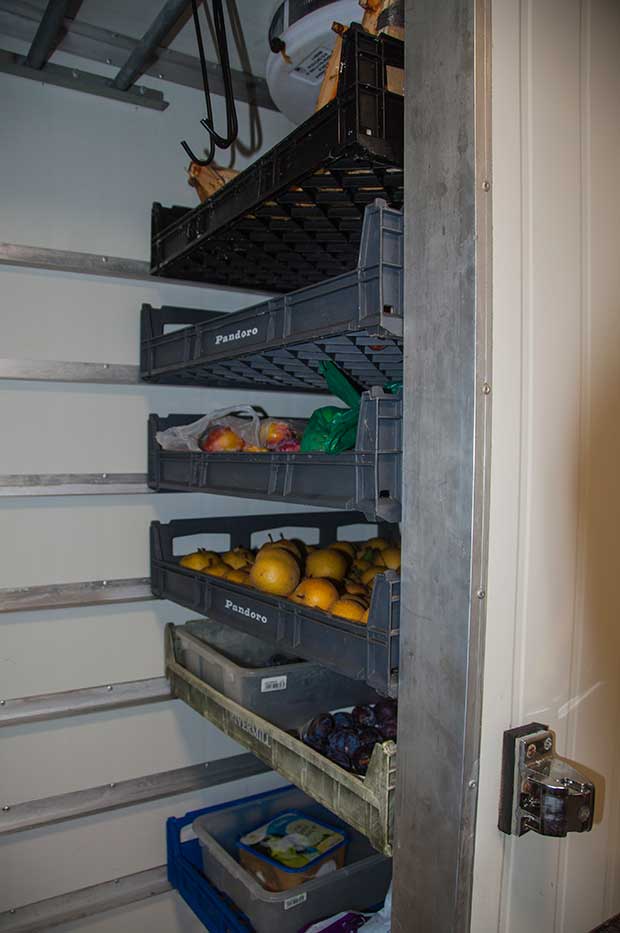
My storage room is 2m wide and 3.5 metres long, with the 70cm-deep chiller at the end. There are no windows – light and temperature fluctuations are the last thing I wanted. Whenever the chiller door is opened, cold air drops into the pantry space, helping to keep it cool. In summer, I sometimes purposely leave) the chiller door open a crack to drop the temperature.
Unfortunately, the airflow isn’t good. All I can do is leave the outside door open during cool winter nights.
Much thought went into shelving, and different options were costed out. We decided on having stainless steel shelves made, which were cost-effective and have proved to be excellent.
After a childhood in quakey Hawke’s Bay and horror stories from Christchurch, I insisted on a curtain cord in front of each shelf – about 15cm up – so I can wipe underneath (see picture above). This is great as I can stack to the edge of the shelf without worrying about jars falling off and it will hopefully keep things secure in an earthquake.
Other shelves are made from recycled bread tray racks, invaluable at harvest time. Fruit and vegetables are sorted and packed into the trays in the orchard or garden as they harvested. They are then hosed and washed, and/or left out to dry, then stacked into the chiller or storage area with no double handling.
Pest control
The storage room is secure except for the entry door and it hasn’t yet fallen victim to pests. Flies don’t like the cold, the cat ensures no mice get past the back door (although I do have a trap set just in case), and I am picky about jars and the like being clean and sealed so they don’t attract ants.
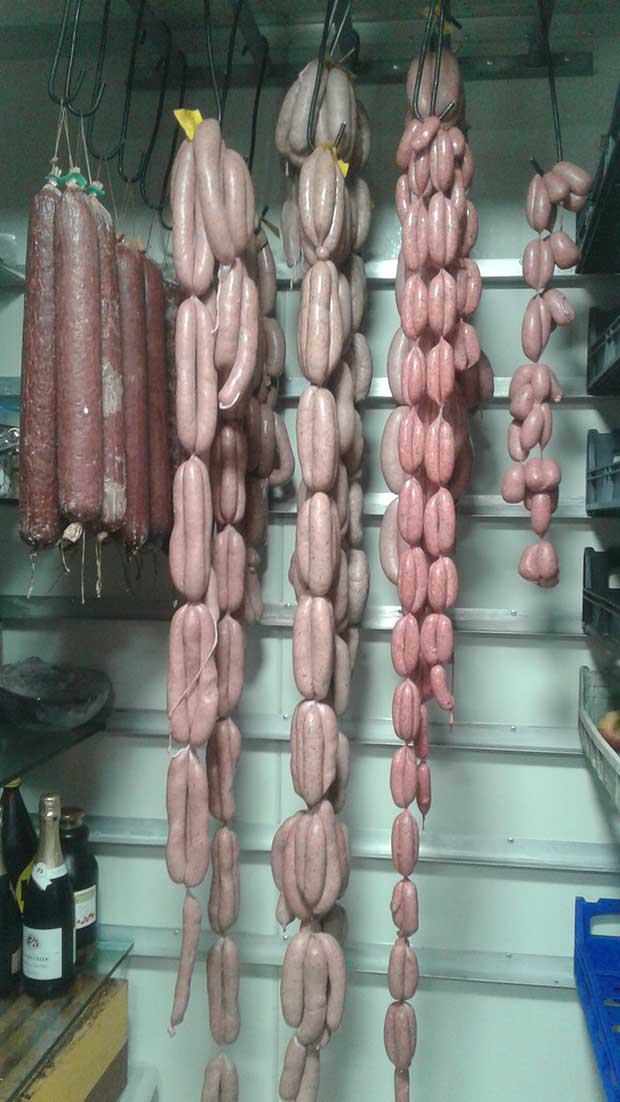
I do not do any processing in the storage room. It is for storage only. It is also the one room in the house I occasionally sanitise with bleach.
Pluses
The location, close to the incoming processing area and kitchen, is invaluable. I try to limit door openings (and temperature increases) in summer but I do go in and out frequently.
A small bench inside to put things on is great. Trays of fruit and armloads of jars are placed there before stacking on the shelves. Cheese is pressed on it, and meat can be left to defrost away from flies.
A switch on the door turns the light on and off as I enter and exit, great considering my arms are usually full of stores. For the same reason, I swapped the round door handle for one I can open with my elbow.
Having all the food in one place makes management a lot easier. Each day, I can survey what needs using, what is spoiling, what needs processing and the quantities I still have so I can menu-plan.
Dangerous goods – ginger beer, apple cider and kombucha – are stored in lidded plastic containers to contain any spillage. The low temperature has prevented any explosions.
The chiller means I can harvest fruit when it is in its prime, and bottle or freeze it when I have time. Some fruits, like apples and nashi, keep so well I no longer bother to process them at all. They store beautifully, degenerating slowly but still suitable for cooking 10 months later.
The chiller also allows me to hang a string of sausages, age salami or hang a carcass to set. It wouldn’t hold a whole cow but is perfect for pigs, sheep and deer.
Minuses
I am not sure that trying to age cheese and store root vegetables in the same space is a good idea as a lot of bacteria are brought in with the potato crop. I mitigate this issue by waxing my cheeses, or storing them in sealed containers.
Using the chiller for drinks is definitely a bad idea. Party traffic and frequent opening of the doors results in contamination and big fluctuations in temperature. There is now a designated beer fridge elsewhere, well worth the cost of the extra electricity.
Unfortunately, the laundry is on the north and hottest side of the house. This means hot air enters the storage room every time I do. Keeping the pantry at 13°C during summer is a real challenge.
GOING UNDERGROUND
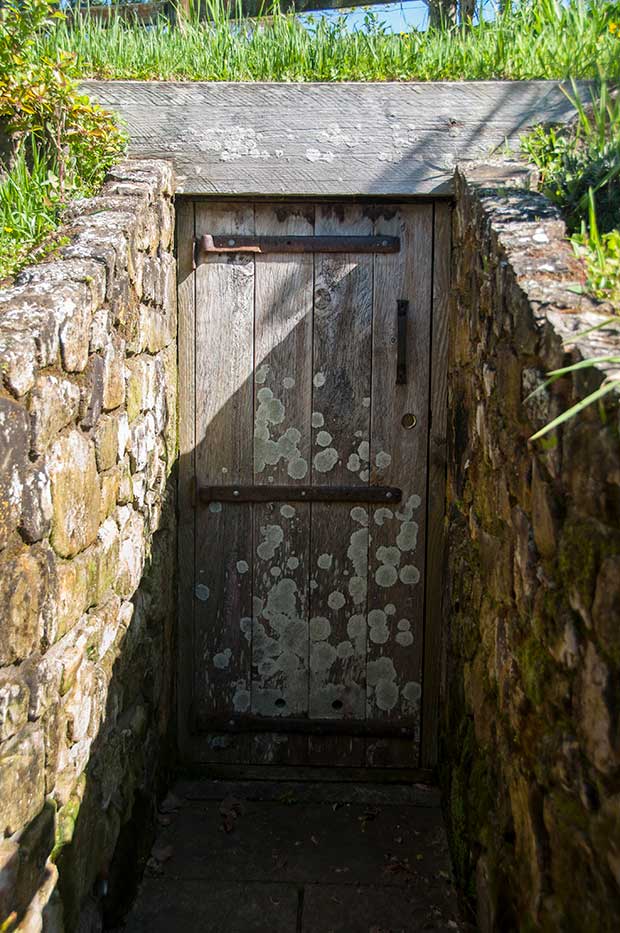
A location like this may not be as close to the house, but an underground cellar has a lot of benefits. Earth insulation is effective, ethical and economical.
It is naturally damp too. I have heard of cellars constructed with flowing water over the floor, enabling constant moist coolness, even with good airflow.
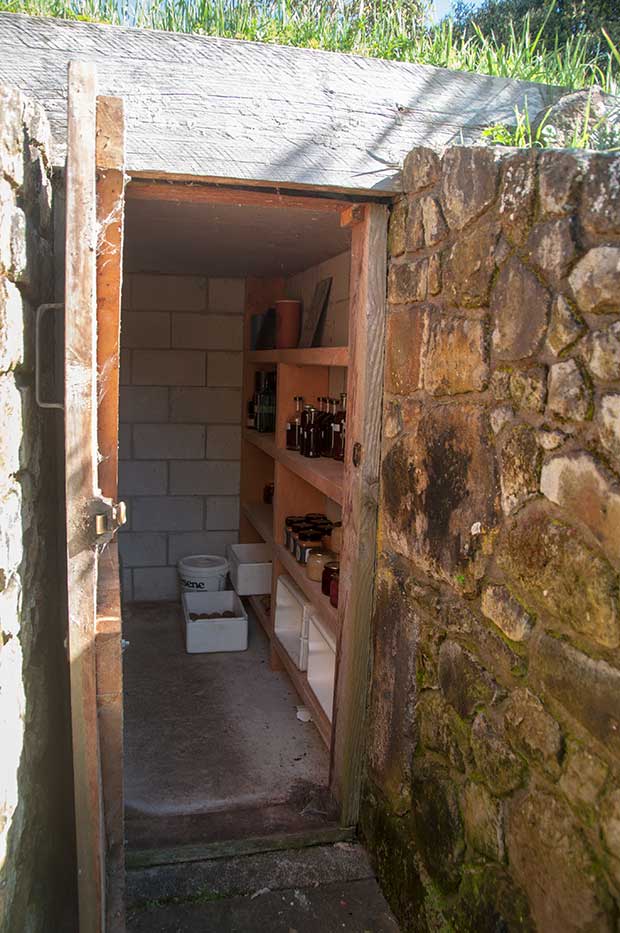
Love this story? Subscribe now!
 This article first appeared in NZ Lifestyle Block Magazine.
This article first appeared in NZ Lifestyle Block Magazine.
